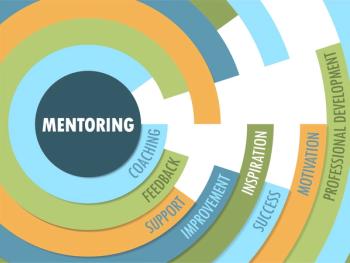
- Vol 34 No 1
- Volume 34
- Issue 1
Eight Enemies of Good Writing for the Lay Reader
It’s too bad that so many experts-in medicine and in other professions-can’t write for a lay audience. Here's some help.
LOOKING OUTSIDE THE BOX
“Subtypes (some of which are coded in the fifth digit) and specifiers are provided for increased specificity. Subtypes define mutually exclusive and jointly exhaustive phenomenological subgroupings within a diagnosis.”
-DSM-5
Did you get that?
Me neither.
It’s too bad that so many experts-in medicine and in other professions-can’t write for a lay audience. They may be fine writing for journals and textbooks but fail in communicating beyond a small circle of colleagues.
Lives can be profoundly affected-maybe even lost-when professional knowledge is not effectively articulated by experts. Many important decisions are made only with a Google search-decisions that often determine our health, the health of our families and our communities, as well as wealth!
For those who aim to improve their craft, here is my list of 8 enemies of good writing, with examples.
1Burying the Lead: Good writers know the first sentence needs to grip the reader. And the next sentence needs to tighten the grip.
“The data suggest both positive and negative movement in the underlying segments of the population that, in total, kept the overall uninsured rate almost flat,” wrote a public health official, perhaps thinking he was saving the best for last?
Burying the lead is aptly termed because your reader will have fallen asleep or expired before the subject appears. Doctors are especially prone to this enemy, fond as they are for a lengthy exegesis before getting to the point.
2The Anxious Professional Syndrome (aka The Biggest List): Professionals are prone to write as if they are taking an exam, with admonitions bellowing in their head: Show how much you know! Don’t risk omitting anything a professor might ask!
An example would waste your time (and my word limit!). Get to the point-lay readers want to know what is important to them-not to The New England Journal of Medicine or The Law Review.
3Clutter: Clutter comes in many forms. One is using 2 or more words when one will do, like “dangerously toxic” or “in light of the evidence.”
Clutter is also using unnecessary phrases like “An important thing to note . . .” or “I want to add” or complex words (or terms) when simple will do, such as “prioritize” for select, “issuance of protocol” forrules, “preparatory activities” for initial work, and “heterogeneous” for different.
Clutter can numb the reader or dodge frank expression, as in “collateral damage,” “meaningful discussions were had,” or “the reported side effects included obtunded thinking and anaphylactic shock.”
The answer to clutter is mercilessly discarding unnecessary words and phrases. It is taking pleasure in pruning your prose.
4Lack of Clarity: Writers owe readers clarity.
“Empirical studies, scientific data, and anecdotal evidence demonstrate that absent any other deficit, disease, or injury, it generally follows that if you play with, talk to, teach, and otherwise actively engage your baby, his/her brain tends to develop optimally, in large part through more vigorous ideal myelin formation.” Might simply say: “We have ample proof that playing with an infant promotes brain development.”
5Jargon: Using technical nouns or phrases is another common error by professionals. Write in everyday English: if your mother would think the writing is another language, it probably is!
My colleagues in mental health and neuroscience are sweet on terms like object relations, genomics, urban drift, neurocircuitry, unconscious representations, and cognitive dissonance. These are jargon: they confound more than explain.
If you have doubts about how to tell good writing, keep in mind: “. . . [b]eyond a certain point complexity is fraud . . . when someone creates a system in which you can’t tell whether you’re being fooled, you’re being fooled.”
6Fatiguing the Reader: Long sentences and long paragraphs are enemies to be conquered.
Short sentences full of lively nouns and action verbs carry the reader forward, effortlessly. Short paragraphs allow the mind to rest, absorb what has been written, and then move along.
Be kind, rewind: go back and shorten your sentences. Find places to shorten sentences and where pressing “Enter” within a paragraph will give everyone a break.
7Being Distant: Is the writer personable, respectful, and kind-or distant, haughty, or mean? Does the writer help or not?
“An inability to smile or express emotion through the face is so characteristic of the disease [of schizophrenia] that it was given the name of affective flattening or a blunt affect.” Where is the person in this sentence, or why it is helpful?
The highest praise I have had as an author was when a family member told me that reading my work was like being at her kitchen table talking about what is important.
8Incomplete or Dull Endings: “The conclusion section is very easy to write: all you have to do is to take your abstract and change the tense from present to past,” wrote someone who read too many medical papers yet kept his sense of humor.
Endings are your way to come full circle: sum up, in new and memorable words, what you want your reader to be left thinking. Some of the best endings deliver a quote that hits the message out of the park (when the article has set the reader up for the home run). Endings that deliver a note of surprise are a delight for the reader who has followed you to the end.
“This is not the beginning of the end-but the end of the beginning,” Winston Churchill said upon the Americans entering World War II. And this is the end of our beginning discussion of this subject.
MORE ABOUT Lloyd I. Sederer, MD
I am a psychiatrist and public health advocate. For the past 8 years, a week or so at a time, my wife and I have walked the ancient Santiago de Compostela pilgrimage trail that goes from central France to the coast of western Spain. We have completed over 1000 km of the 1600-km hike. I speak French, so I was good in France but had to dust off my junior high school Spanish for the long hike in Spain!
It was on this pilgrimage trail in late October 2015 that I had the inspiration for my latest book, Improving Mental Health: Four Secrets in Plain Sight, which I wrote in France during Christmas break last year.
I have served as Medical Director of McLean Hospital, a Harvard teaching hospital in Belmont, Massachusetts, Director of the Division of Clinical Services for the American Psychiatric Association, and Mental Health Commissioner for New York City. I am currently Chief Medical Officer of the New York State Office of Mental Health, Medical Editor for Mental Health at The Huffington Post, and an Adjunct Faculty Member at Columbia University’s Mailman School of Public Health. I have published 10 books for both professional and lay audiences, and my writing has been featured in the New York Times and the Wall Street Journal, among many other publications.
Disclosures:
Dr. Sederer is Adjunct Professor at Columbia University Mailman School of Public Health; Chief Medical Officer, The New York State Office of Mental Health; and author of several books (see profile below). For more, follow him on Twitter: @askdrlloyd. He reports that he receives book royalties from the American Association Publishing Co.
Articles in this issue
almost 9 years ago
Introduction: Cognition, Rarely Discussedalmost 9 years ago
Lithium Therapy, Bipolar Disorder- and Neurocognitionalmost 9 years ago
To Google or Not to Google? Is “Patient-Targeted” Googling Ethical?almost 9 years ago
Opioid Analgesics: The Myths-and the Factsalmost 9 years ago
Medical Marijuana and Dementia-Associated Agitation: Stirring the Potalmost 9 years ago
A Coin Flipalmost 9 years ago
Committed: The Battle Over Involuntary Psychiatric Carealmost 9 years ago
An Update on Melancholiaalmost 9 years ago
Take Two Pills and ...Newsletter
Receive trusted psychiatric news, expert analysis, and clinical insights — subscribe today to support your practice and your patients.

















